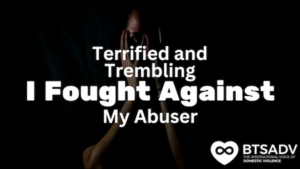
By Rebecca Lynn
According to the NACDV, 72 percent of all murder-suicides involve an intimate partner. However, this percentage is created by the number of reports made to public records, which is thought to be mostly under-reported. Depending on the city, murder-suicides aren’t always recorded with specific information, such as the relationship or history of the murderer and the victim. This is because the abuser is no longer living, and criminal charges will not be filed on the killer. This makes it even more difficult to comprehend how many murder-suicides are linked to domestic violence accurately.
According to the Domestic Abuse Shelter of Florida Keys, of the total number of victims who are murdered by their abusers, 75 percent are killed while leaving or after the relationship has ended. This information is also frequently inaccurate and fails to specify if the victim was a part of a murder-suicide or a homicide by their abuser. Regardless, it can be easily assumed that the numbers are even higher.
The statistics are staggering, and they don’t stop there, according to The Washington Post, one third of the killers were known to be a threat ahead of the murder and in many cities, one third of the lethal abusers had a restraining order during the time of the homicide or were previously convicted of domestic violence. Police report that the most significant numbers of calls they receive are related to domestic violence. These numbers are all based on the fact that most abusive relationships are never reported.
So why don’t victims call and report their abuse? While each victim has their own reasons, some of the more common ones are:
- “The police did not do anything when called and it made the situation worse.”
- ” The police did not believe me.”
- ” I was afraid of retaliation.”
- ” I didn’t know it was that bad.”
- ” I did not want CPS or the courts involved.”
- ” I have kids and nowhere to go, or anyone to call.”
In one way or another, the victims were afraid of making the situation worse, had no resources for themselves or their children, and didn’t believe the abuse was severe because of how the response to their report was handled. Not only were the victims at risk of enduring more abuse, but they were in danger of losing their lives. There was a crucial need for first responders to be more educated and knowledgeable in resources when it came to domestic violence. The Lethality Assessment was created to help police and other professionals that work with victims to identify if the abuse had the potential to escalate to homicide.
What is a Lethality Assessment?
Lethality is best described as the capacity to cause death. Therefore a lethality assessment is an evaluation that predicts the likelihood of the abuser to murder the victim. The Lethality Assessment Program (LAP) was based on the Danger Assessment, which was created by Dr. Campbell. Dr. Campbell created the assessment based on the evidence that there were many factors in a domestic violence relationship that were more dangerous than others, some were proven to be precursors of murder. She also realized that many victims did not know how much danger they really were in or how to get help. The Danger Assessment test contained 20 questions that a victim would answer to determine how much risk they were in based on experiences that occurred during their relationship.
The Lethality Assessment was initially created for law enforcement and was reduced to eleven questions. According to the Lethality Assessment Program, the LAP is a standardized, evidence-based tool that first responders can use not only to determine the level of danger, but also to provide victims with resources, advocates, information about domestic violence, and safety planning. Victims that show a high lethality risk are referred and connected directly with domestic violence organizations that can assist them. Since many victims are not aware of the real danger they are in, the assessment helps them recognize circumstances that make them more vulnerable. The LAP’s purpose is to prevent homicide, create a sense of trust in the police, and connect the victims directly with help, or provide resources if they are not ready for help.
According to the Domestic Violence Lethality Screen for First Responders, the 11 specially-designed questions are:
- Has your partner ever used a weapon against you or threatened you with a weapon?
- Has he or she ever threatened to kill you or your children?
- Do you think he or she may try to kill you?
- Does your partner have a gun, or can he or she get one easily?
- Has he or she ever choked (strangled) you?
- Is your partner violently or constantly jealous, or does he or she control most of your daily activities?
- Have you left your partner or separated from them after living together or being married?
- Is he or she employed?
- Has your partner ever tried to kill him or herself?
- Do you have a child that he or she knows is not theirs?
- Does your partner follow or spy on you, or leave threatening messages?
According to Policeone.com, victims who were threatened with murder are 15 percent more likely to be murdered, and those who were threatened with a gun are 20 percent more likely to be killed. Abusers who own guns are five times more likely to murder their victim, whether they have threatened them or not.
Strangulation is often referred to as the “edge of homicide” and continues to be one of the best ways to gauge future lethality. The immediate and long term effects of non-fatal strangulation continue to be researched, taught to first responders, and are now treated as felonies in most states.
Do Lethality Assessments work? The Washington Post reports that one third of victims who spoke to a domestic violence counselor over the phone, with the assistance of a first responder, were more apt to seek help from a shelter, get a protective order, or call a hotline than those who did not. By first responders providing real-time support to the victim, they are able to connect the victim with resources while things are still hostile, and not days later when the victim and abuser are most likely in the honeymoon phase.
One of the most substantial barriers for victims to seek help is the amount of work and people they need to navigate through to get the help they need. Instead of spending a day going from government offices to domestic violence organizations, the victim is able to receive all the resources at the sight of the incident. The LAP program continues to improve its process, gain approval, and if done consistently, prevent homicide by predicting it.
If you or someone you know is in an abusive relationship, there is help. You can visit the Break the Silence website at www.breakthesilencedv.org or chat with one of our helpline advocates at 855-287-1777.









